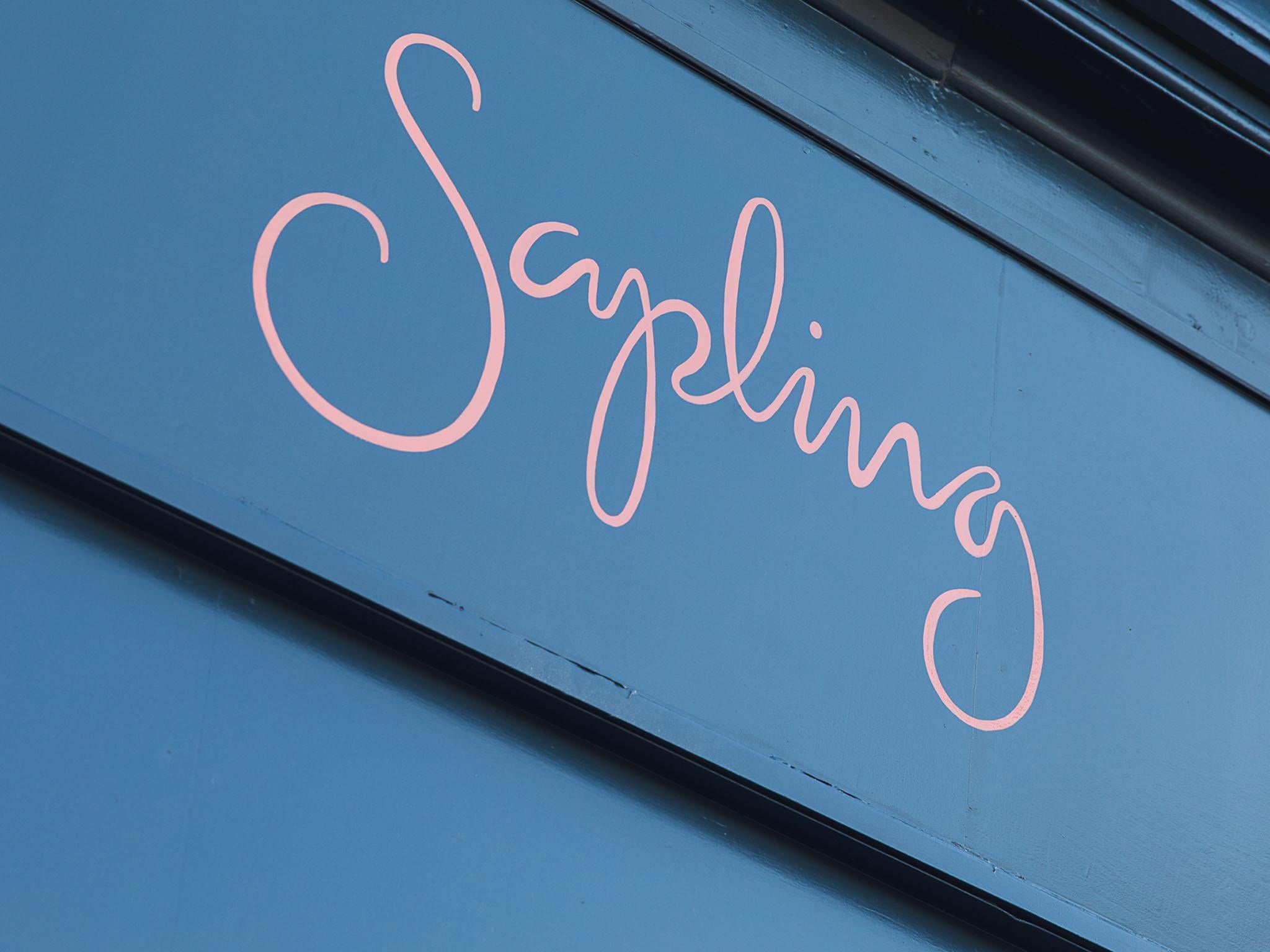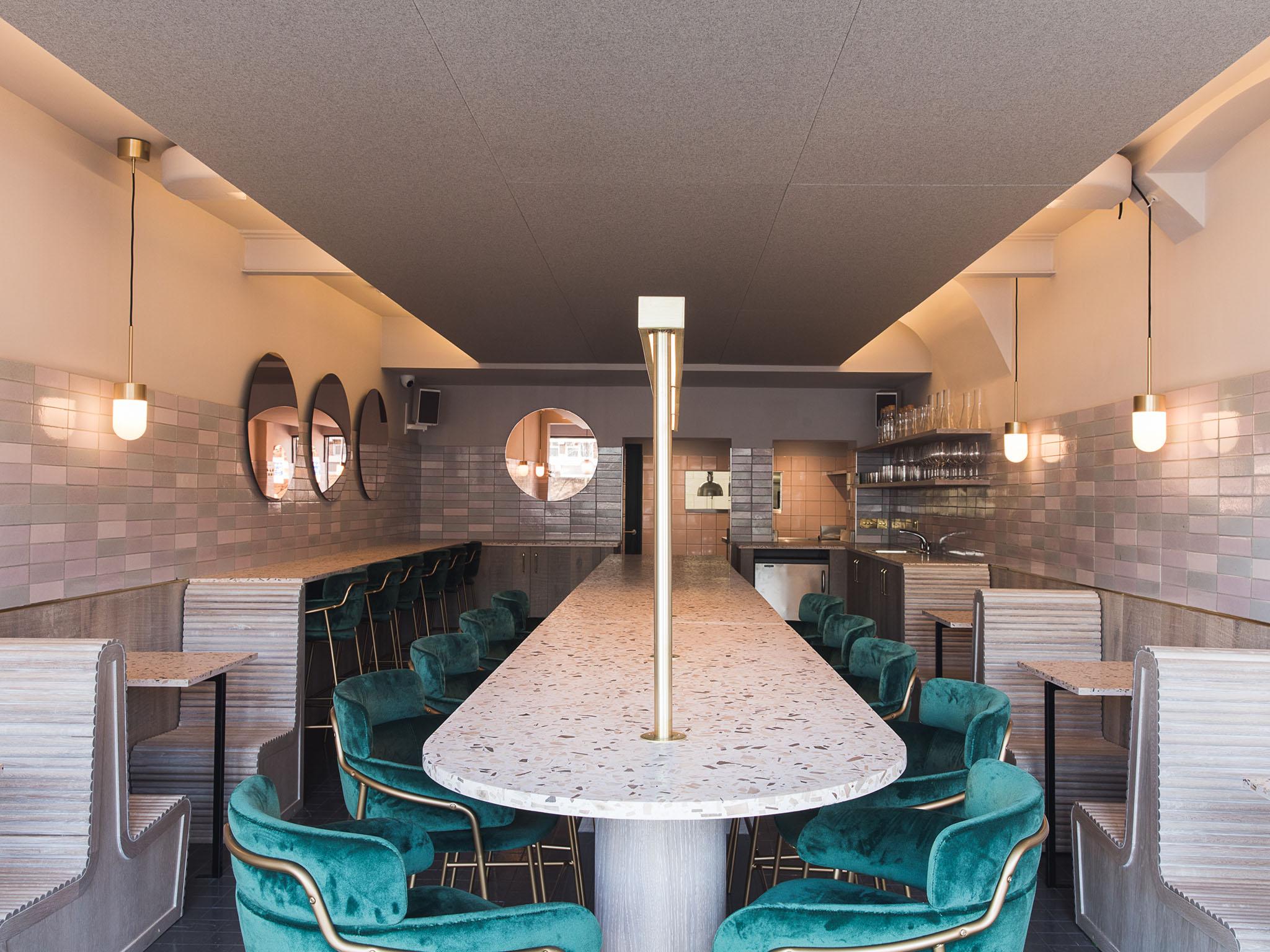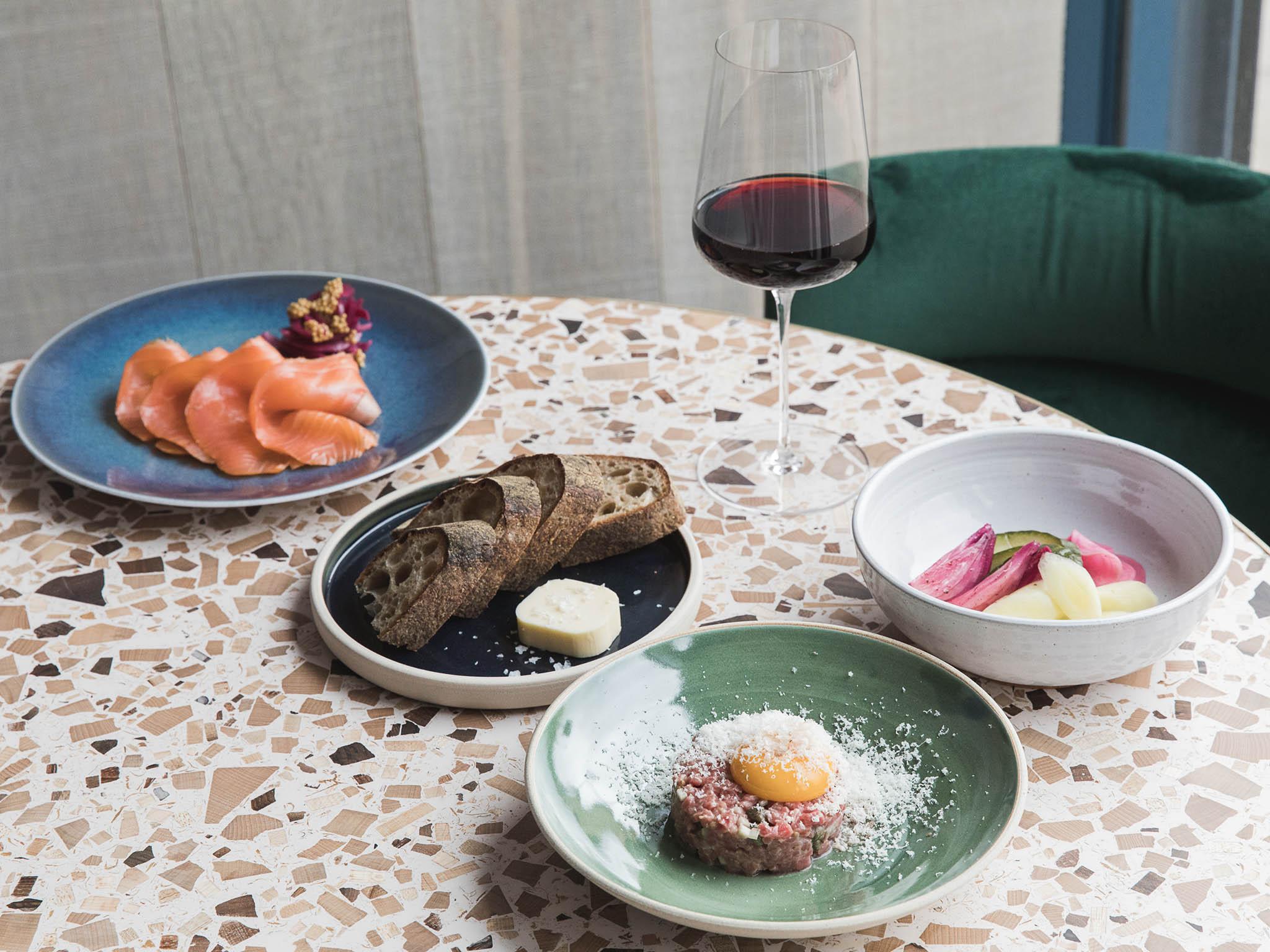The restaurant where the wine is more important than the food
Interest in wine has lagged behind interest in food for years. But now, a new wave of dining sees dishes being created to match chosen wines, not the other way around

It’s not a restaurant. It’s a “wine focused kitchen and larder”. To break that down, Sapling, which opened last month in east London’s Dalston, makes wine the table’s centre stage, not the food. The latter comes secondary to the alcohol and is designed to be paired alongside it. It marks a turning point in the way we view wine; traditionally served as accompanying the food and to enhance the flavours of what we’re eating.
It goes far beyond the attitudes of traditional restaurants who normally offer just a handful – or even as little as three – wines by the glass.
Wine has lagged behind the rise in interest in food for years. We have numerous cooking shows, celebrity chefs and bookshops full of cooking books providing inspiration, but there is little comparison when it comes to wine. It stands firmly in the shadow of food and is viewed as a niche and inaccessible skill and interest. But now, wine bars are changing this, and this is the new wave of them doing it.
Bob Ritchie, owner of Sapling, remembers London in the 1990s when there was fine dining, but not really the “middle” level of eating out we have now. “It just didn’t really exist, and wine was part of that. It wasn’t accessible,” he says.
But now there’s a new wave of dining changing this. As consumers grow more aware of where their food comes from, asking if it’s ethical, did it live a good and spacious life and is it free of chemicals, the same has happened with wine – just at a much slower rate.
Ritchie grew up on a dairy and beef farm in Ayrshire, which inspired his love of food, but has called north-east London home for more than a decade. But it’s his formative years that have shaped his love of seasonal, homegrown produce. While the wine came later.
The entire concept of Sapling has been five years in the making. In that time, Ritchie began his own wine journey after growing up in a teetotal family.

“We didn’t have wine on the table at home, and I’ve come to it quite late. I only got into it about 10 or 12 years ago. Then I’d find myself dashing off at lunchtime to go to wine tastings by myself and I’d almost feel like I was a bit of an alcoholic, spending so much time on my own in wine shops.
“Wine tastings at Berry Bros then evolved into wine schools in Beaune, multiple wine exams, nearly two years of searching for the right site and then leaving my previous career at the end of 2016 to make Sapling happen.”
And searching for the right site was confined to one specific area. “It needed to be in east London as this is where there’s a huge natural wine movement and where people are keen to try new things,” he says.
In-house sommelier, Dan Whine (yes, that’s his name), is a trained winemaker and along with Ritchie has selected mostly biodynamic and organic wines, as part of the weekly-changing 36 wines by the glass, because of the dedication, passion and time that goes into making them.
“Biodynamic wines are not easy to make. The producers need to believe in it as it’s hard work,” says Ritchie.
“The process is a move back towards agriculture methods from the 1920s in a pre-chemical world. And that’s for good reason. People care where something has come from and how it was made” he says.
Part of the ethos behind Sapling is to help people learn about wine and explore it themselves, as Ritchie did. One of the reasons for choosing 36 wines is to fit a little description under each wine name on the menu that helps the average diner to learn a little about the wine, without it being pretentious or stuffy.
Currently, the menu is dominated by Italian and French wines, with a couple from the USA, Georgia, Portugal and Australia. But it’s always changing. “We look for interesting wines and will be using some English sparklings, but not the consumer-focused ones that have already lost their individuality.

The 2015 Georgian saperavi from the Vita Vinea vineyard is a natural wine and is incredibly smooth and easily drinkable. The grapes are grown at 400m altitude in the foothills of the Caucasus and it’s aged in clay pots, known as qvevri, which is a traditional Georgian method.
Downstairs is where the other 100 bottles are kept, and the beauty of this cellar is that it uses the Coravin system, so a glass of wine can be extracted without corking the bottle, which encourages people to taste more and explore.
Although here the food comes second, it’s not an afterthought. In the kitchen is chef John Beeharry who designed a British-focused menu of small plates to share, with locally sourced ingredients.
“We always wanted the kitchen to be strong,” says Ritchie. “People expect food where there’s wine. But what we’ve done is to make the dishes balanced in themselves, rather than relying on a wine to pull the flavour of the food into another direction.”
Starter sizes include slices of locally smoked salmon with picked red onions and mustard seeds, or sardines and winter tomatoes, while larger plates include gurnard with allspice bisque, and rainbow chard and chicken terrine with braised tropea onion. The dishes are purposely uncomplicated, with the intention of letting the quality of the ingredients shine through.
The larder part of the menu is made up of cheeses from around the world and cured meats, using rare breeds such as Hackney-based Black Hand and Cornish Charcuterie, which makes it more akin to traditional wine bars.
But what is important to remember is this isn’t a wine bar. Not in the traditional sense anyway, where there’s a strong attempt to look and feel like an Italian enoteca-style bar. There’s no barrels for tables, no tables made from corks and no walls lined with copious amounts of bottles or chunky well-trodden wooden floorboards.
Instead, the interiors have been given thought, thanks to designer Ben Masterton-Smith. Pastel tiles are on the walls, there’s low, pendant lighting and at the heart of the room is an elongated double-sided bar (that’s essentially a huge kitchen island) with seats around its entirety for causal eating and drinking; a nod to a more European take on casual dining and eating at home.
Will wine catch up with our obsession of food? When it tastes and looks this good, it certainly will.
Three other wine focused restaurants
Plateau, Brighton, plateaubrighton.co.uk
Using independent producers and serving natural and biodynamic wine that reflects its ideology of taking nothing out, and putting nothing in, Plateau serves 20 wines by the glass. The food is sourced from local biodynamic farms too, and it also hosts wine tasting evenings and discussions.
Friends of Ham, Leeds, friendsofham.co.uk/friends-of-ham-leeds
Twenty-five wines by the glass – including orange wine and natural roses from Luxembourg and Austria as well as Spain, Italy and France – are accompanied by sharing boards of cheese and charcuterie as well as a mixture of Italian and British dishes.
The Laughing Heart, London, thelaughingheartlondon.com
Also in east London, this restaurant has a bar well-stocked with biodynamic and organic wines that’s split into red, white, pink, fizzy, sweet and oxidative, and there’s also an off-license that’s open until 2am.
Join our commenting forum
Join thought-provoking conversations, follow other Independent readers and see their replies
Comments
Bookmark popover
Removed from bookmarks